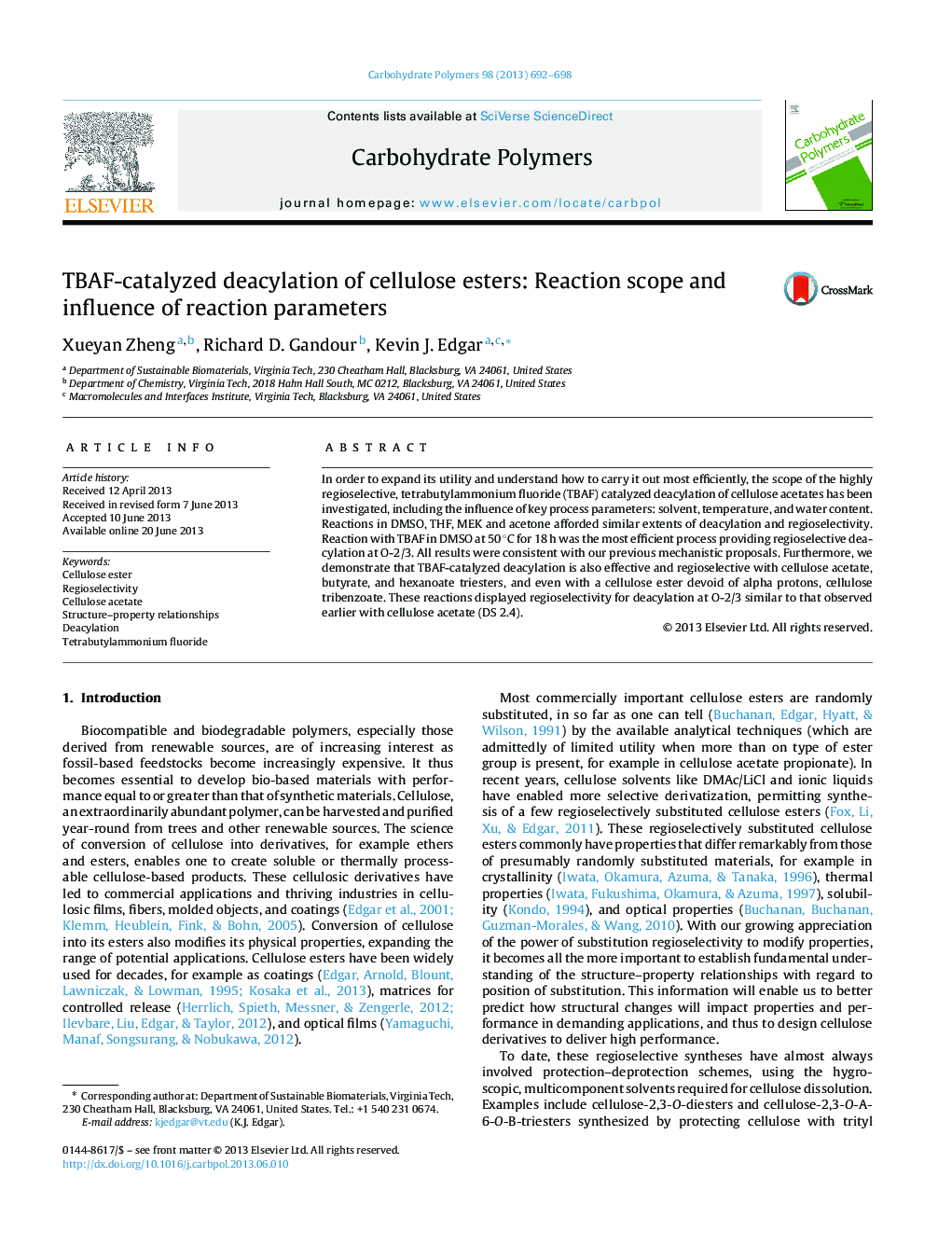| Article ID | Journal | Published Year | Pages | File Type |
|---|---|---|---|---|
| 10603363 | Carbohydrate Polymers | 2013 | 7 Pages |
Abstract
In order to expand its utility and understand how to carry it out most efficiently, the scope of the highly regioselective, tetrabutylammonium fluoride (TBAF) catalyzed deacylation of cellulose acetates has been investigated, including the influence of key process parameters: solvent, temperature, and water content. Reactions in DMSO, THF, MEK and acetone afforded similar extents of deacylation and regioselectivity. Reaction with TBAF in DMSO at 50 °C for 18 h was the most efficient process providing regioselective deacylation at O-2/3. All results were consistent with our previous mechanistic proposals. Furthermore, we demonstrate that TBAF-catalyzed deacylation is also effective and regioselective with cellulose acetate, butyrate, and hexanoate triesters, and even with a cellulose ester devoid of alpha protons, cellulose tribenzoate. These reactions displayed regioselectivity for deacylation at O-2/3 similar to that observed earlier with cellulose acetate (DS 2.4).
Keywords
Related Topics
Physical Sciences and Engineering
Chemistry
Organic Chemistry
Authors
Xueyan Zheng, Richard D. Gandour, Kevin J. Edgar,
